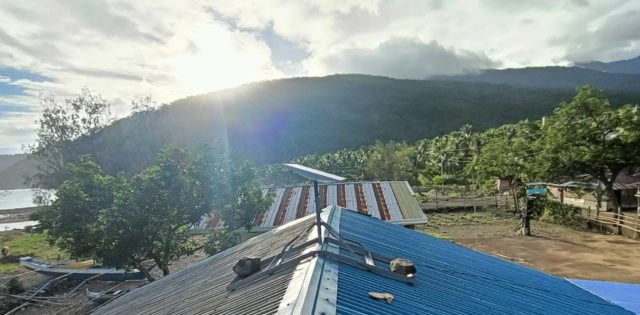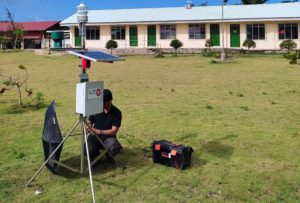
DINGALAN, Aurora (PIA) – Residents of Dikapanikian village in Dingalan town may now enjoy high-speed Internet connectivity.
This is Philippine Space Agency (PhilSA) installed a satellite Internet system called Starlink in the said geographically-isolated in disadvantaged area (GIDA) as part of its Introducing Non-Geostationary Satellite Constellations Test Deployment to Improve Internet Services (INCENTIVISE) project.
During the public demonstration of the said project, PhilSA Director-General Joel Joseph Marciano Jr. underscored that the initiative aims to demonstrate how satellites can bridge connectivity gaps especially in remote and rural areas in the Philippines.
“For our archipelagic and maritime nation, satellites can effectively and quickly provide a canopy of high-speed Internet coverage to communities and nautical highways that open the door to economic opportunities. Satellite overlays complement and coexist with the continuing rollout of terrestrial infrastructure and undersea cables for connecting our many islands, he said.”
Through the Starlink, students, teachers and the local government office of the said village will enjoy free high-speed connectivity that enables lag-free video calls, online gaming, streaming, and other high-data-rate activities for six months.

The satellite network developed and operated by American spacecraft manufacturer SpaceX also features an easy-to-setup system that makes it ideal for bringing the Internet to remote locations where connectivity may have been unreliable or completely unavailable.
In addition, Marciano underscored that the INCENTIVISE project aims to promote inclusivity in various GIDAs in the country through connectivity.
“There are communities in our country that are still unfortunately beyond the reach of mainstream services of our government… By putting up satellites, we can immediately provide coverage that can reach many people— people with different backgrounds, livelihood, and different persuasions. That is what space technology can do for the country: promote inclusivity by providing access,” he stated.
PhilSA also installed a weather and network performance monitoring system at the site to gather insights in its performance in the local setting considering weather conditions, power outages, and Internet status.
Also, Marciano emphasized that they will continuously work with different companies to showcase their technologies in lessening the country’s digital divide through the INCENTIVISE project.
“The Internet is a vital infrastructure. Part of this global network that provides the Internet are satellites… By experiencing the Internet in this way through satellites that could offer us high-speed connection, we can better appreciate the value of space technology and science technology in general, and how it impacts and improves our lives.”
PhilSA pledged it will prioritize space technologies to connect to communities and improve its services to further fulfill the national space roadmap.
Meanwhile, United States Agency for International Development (USAID)-Better Access and Connectivity (BEACON) activity Chief of Party John Garrity lauded the Philippines for being the first country in Asia to leverage low earth orbit satellite broadband.
“One of the things that we know about the Philippines is that only half of the population are participating online. A lot of that has to do with the environmental conditions, the geography. It is an archipelago so there is limited terrestrial infrastructure that connects those islands,’ he added.
For this reason, he added that the organization will continue to work with the national government to improve the country’s digital infrastructure and Internet connectivity to enable access to worldwide information and services, enhance productivity, and support innovation. (CLJD/JLDC- PIA 3)




